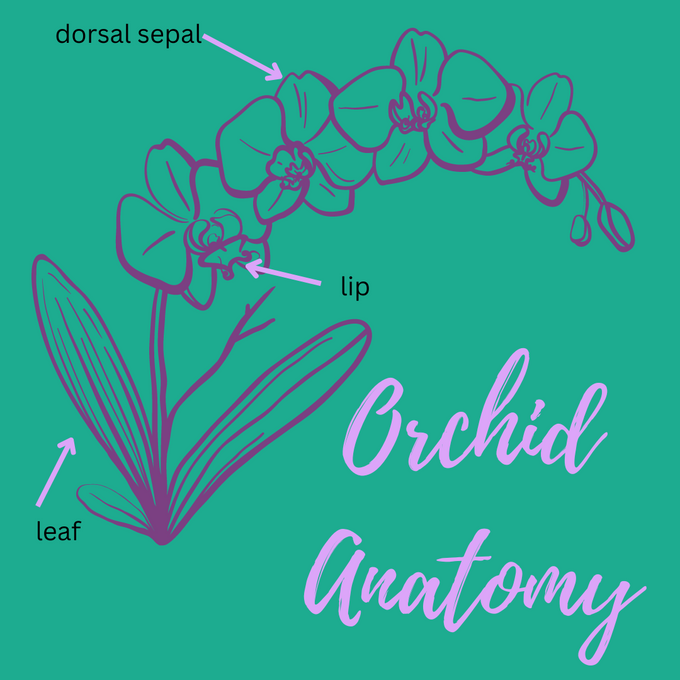
Orchid Anatomy: Plant Parts and Terminology
Posted by Kamaile on Jul 28th 2023
To master anything, you need to learn the ins and outs of the subject in question… even if you’re learning to grow orchids.
The plant world is a seemingly beautiful blend of nature and science. And the orchid community is no different.
If you’re looking for simplified clarity, we’ve created this article just for you!
Plant Anatomy
Plant parts are divided into four main structures:
- Roots
- Stems
- Leaves
- Flowers (which includes the parts for its reproductive cycle)
We’ll explore the more unfamiliar of these basic terms. You’ll find all
that information with diagrams below! Enjoy!

1.Roots
Orchid roots are covered in a sponge-like tissue called Velamen that absorbs water and nutrients. It is important not to overwater your orchids because this tissue can only absorb and not release. Not all orchids are terrestrial and found growing in the ground with their roots buried beneath the soil, in fact most of them are epiphytes found growing along side the trees. Because of this, you will find that epiphyte type orchids planted in pots will produce “aerial roots ” that reach out into the air, rather than digging down into the media.

2.Stems
There are two types of orchid plants when classifying according to growth.
- 1.Monopodial orchids which grow from a single stem
- 2.Sympodial orchids which grow along a rhizome in the form of pseudobulbs.


Pseudobulbs are a thickened, bulbous portion of the stem which act as a storage organ that retains water and nutrients. Older pseudobulbs are called backbulbs while the newest pseudobulb is called the lead bulb. From the lead bulb new growths will appear which will in turn form a new pseudobulbs and produce flower stalks.
3.Leaves
Orchid leaves come in various colors, shapes, and sizes as numerous genus have different forms. If the orchid produces one leaf, it is called unifoliate. Some orchids, called bifoliate, grow leaves in pairs.
No matter how they grow, leaves are the critical component responsible for breathing. Each leaf contains small pores, called stomata, that allow them to inhale carbon dioxide and exhale oxygen. When these pores open and this exchange occurs, water escapes out through the pores. Humidity which is essentially water in the air is important as it keeps the orchid from dehydrating during the process. If there is not enough humidity, the stomata close and the orchid isn’t able to properly “breathe”.
As with other
plants, leaves are also very much important for the absorption of sunlight for
growth and flower production.
4.Flowers
The flower is the most appreciated part of the orchid plant, by orchid growers and nature alike. It not only offers beauty,
but the ability to hybridize these amazing plants as the flowers are the reproductive units of orchids. Each flower is comprised of 3 outer sepals (dorsal sepal at the top of the flower and 2 lateral sepals at the bottom) and 3 inner petals (2 petals and 1 lip or labellum).
You will notice that the lip is larger than the petals and typically more attractive to draw in its pollinators.
At the center of each flower, the column stands erect. This is where the reproductive organs, called the anther and stigma, are located.
Each blossom sits on a flower spike called the pedicel and each pedicel grows from the flower spike called a peduncle. This entire structure, from the flower spike to the flowers is called the inflorescence.

Now you know the basic parts of your orchid.
We hope this article has helped to break the ice when it comes to getting to know your orchid plant. We’ll certainly be putting out more articles with further in depth information on other various terms in the orchid community. If you have any questions or need any assistance, please feel free to contact us directly.
Until then, happy growing!
